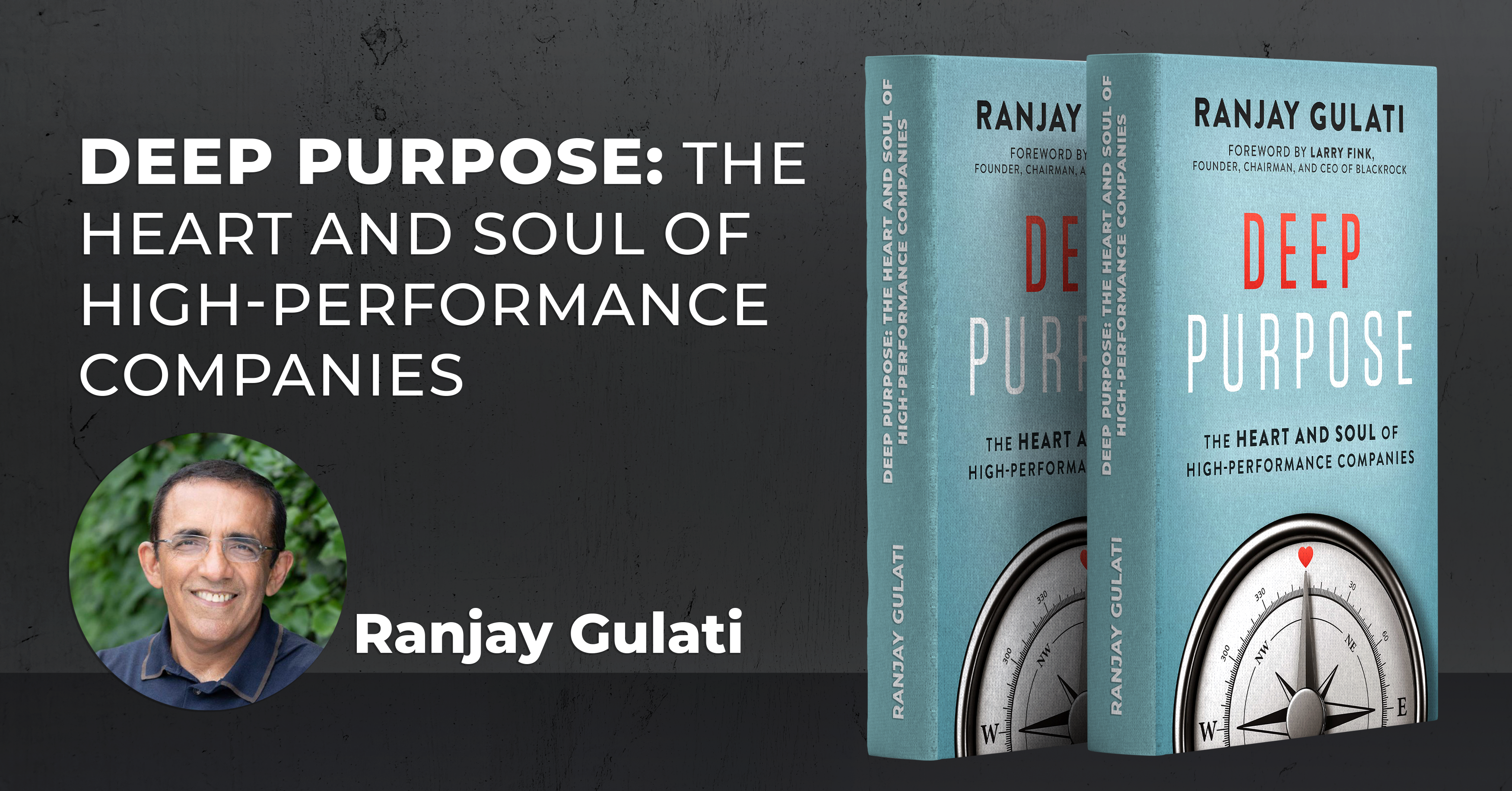Deep Purpose – Ranjay Gulati
Thanks to Selvan D for gifting me this book (Deep Purpose by Ranjay Gulati) to read. A company needs to have a purpose to exist. The author also talks about the purpose of convenience. He cites the example of Facebook where they looked at short term profits and would not change the algorithms with respect to user privacy and more. They define purpose based on their convenience (on how it suits them).
The author provides direction for companies that are not purpose driven. He recommends starting new lines of business which are purpose driven and slowly transition. If a company is purpose driven and does not generate profits, this is not good either as it will not be sustainable. Deep purpose leaders challenge themselves to deliver both social benefits and exceptional financial results. The CEO/Leader needs to communicate the purpose.
The author recommends CEO’s/Leaders to have a voice and also comment on social issues that impact their purpose. Rather than commenting on anything and everything, they voice out on issues that affect their purpose. The CEO’s should become more comfortable speaking out as activists on key issues related to purpose. Leaders should no longer be neutral and should take a stand (Salesforce, Dick’s Sporting Goods, Delta Airlines CEO’s do this).
Companies that have a purpose are bound to do well in the long term. To fix problems, the author recommends looking at the past (History). He cites an example of LEGO which was on the verge of bankruptcy in the 2000’s when Jorgen Vig Knudstorp led the company during difficult times. LEGO could have been easily shut down and sold to a competitor. However Jorgen turned it around by looking back at the history of his own company. What did they do well, What was the purpose? He even set up a LEGO museum to remind people of the purpose of LEGO and its rich history. The company was turned around. (We see quite a few companies have museums) and it reminds one of history. The author also quotes Satya Nadella, CEO of Microsoft on how he not just looked at the future, but the history of Microsoft. Satya is one of the most successful CEOs today. Employees are connected well and work together and better with purpose driven companies. They attract and inspire employees. Employees today not just look at pay-checks to work. They are driven towards purpose lead organizations.
Companies cannot be run just for profits. While profit is the key, purpose needs to drive the company while generating profits. The author cites the great example of Johnson and Johnson where in 1982 someone in the Chicago area laced Tyelnol with Cyanide and seven people died. The company recalled all the tylenols (also warned consumers across the country to stop using Tylenol). The company spent in excess of $100 million dollars and within six months the company introduced new packaging. This is also regarded as one of the most exemplary cases ever for crisis communication.
Poet or Plumber: The author cites examples of PepsiCo and Indra Nooyi where it is Performance with Purpose. You can note that Performance comes first followed by Purpose. Plumber (where execution comes first) and Poet (where purpose is defined). A company needs both to survive. Also, Story telling and master storytelling are important characteristics of a leader. A CEO needs to ask himself if he is the master storyteller i
The author also quotes examples of Microsoft as a company is a platform to enhance and achieve your personal purpose.
Not to operate in silos. The book also mentions Anand Mahindra where he says that his style of leadership is to delegate and provide autonomy. Mahindra launched Rise in 2011 – challenging conventional thinking – changing the lives of stakeholders and communities across the world to enable them to rise. The author recommends to develop deep trust and you trust your people to do the right thing.
Deep Purpose would not just apply to companies- I think it also applies to all of us. It makes one ask the question, why do we exist? What is our individual purpose in life? The author talks about personal purpose as well and how one can achieve his or her personal purpose by leveraging the company and its purpose. It is easy to be sidetracked and progress in purpose needs to be measured constantly.




Leave a Reply